Scaffolding Companies Moses Lake
Find top Scaffolding Contractors in Moses Lake
Get 3 FREE Scaffolding Companies quotes for your project today! Compare profiles, reviews, accreditations, portfolio, etc... and choose the best service.

Performance Contracting Inc
4.218 reviews3136 B Street NW, Auburn, 98001, USPerformance Contracting, Inc. (PCI) is a leading specialty contractor in the United States, offering a wide range of services and products to industrial, commercial, and non-residential sectors. With a strong focus on safety, PCI's 'Target Zero Incidents' safety program ensures a secure and efficient work environment for all projects. The company's commitment to excellence and customer satisfaction sets them apart as a trusted industry leader.
- Services
- Why Us?
- Accreditations
- Our Team
- Testimonials
- Gallery
Get Quote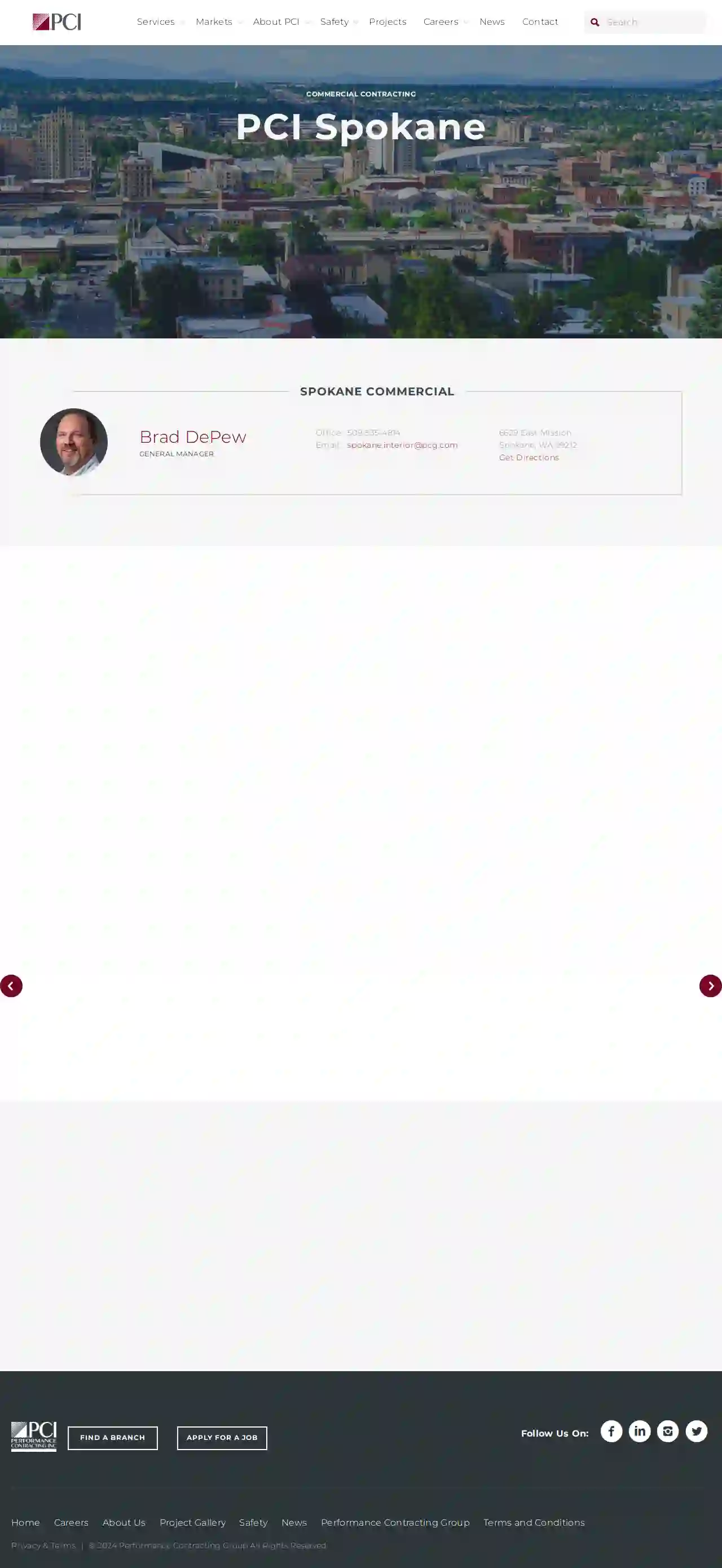
Performance Contracting
48 reviews6629 East Mission, Spokane, 99212, USPerformance Contracting, Inc. is a leading specialty contractor in the United States, providing a wide range of services to industrial, commercial, and non-residential sectors. With over 60 years of experience, PCI delivers top-tier construction services, focusing on creativity, innovation, and customer satisfaction. The company's commitment to safety, quality, and craftsmanship sets it apart from competitors, making it a trusted partner for clients across the country.
- Services
- Why Us?
- Accreditations
- Our Team
- Testimonials
- Gallery
Get Quote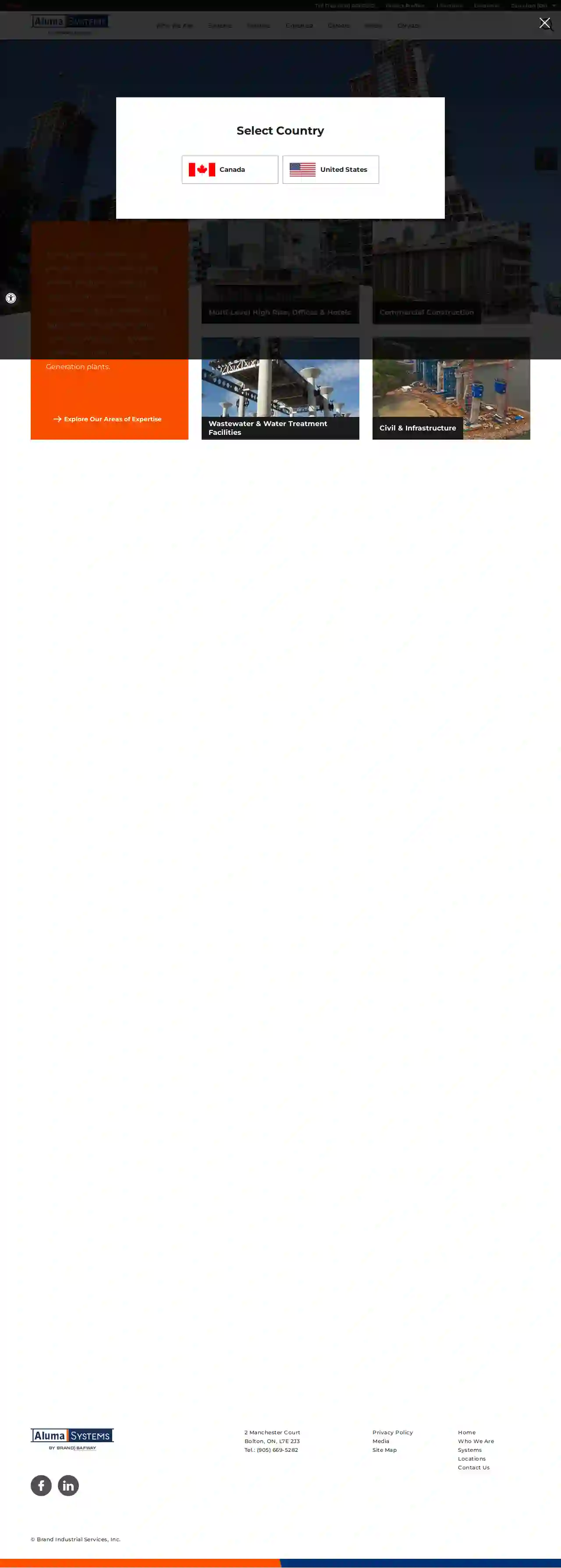
Aluma Systems (Concrete Construction)
318 reviewsBolton, ON, 2 Manchester Court, L7E 2J3, USAt Aluma Systems, we deliver high-efficiency concrete forming and shoring solutions to projects ranging from Commercial & High-Rise construction to Infrastructure applications like Transportation Terminals, Wastewater & Water Treatment Facilities & Power Generation plants. With more than 360 locations in 27 countries, we're everywhere you need us to be.
- Services
- Why Us?
- Accreditations
- Gallery
Get Quote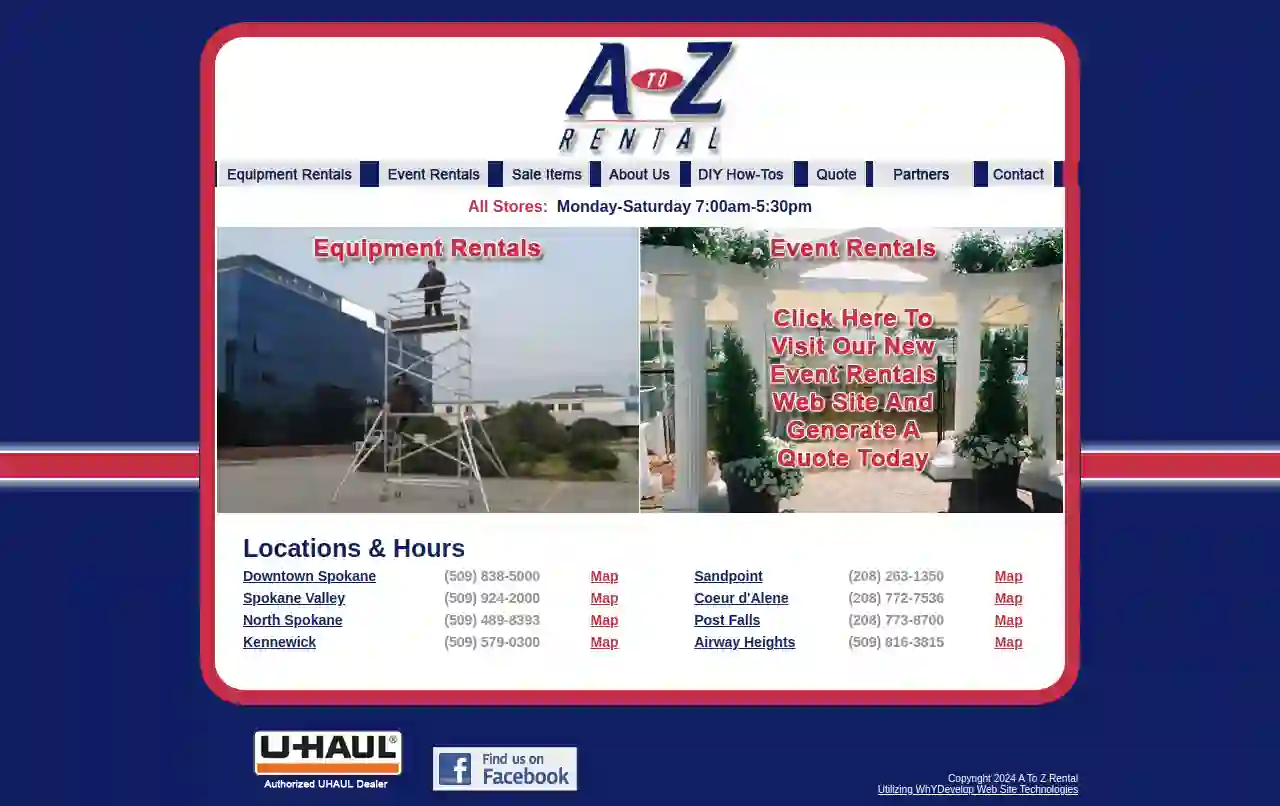
A to Z Rental
4.1204 reviewsSpokane, USA To Z Rental: Your One-Stop Shop for Equipment Rentals A To Z Rental is your trusted source for a wide range of equipment rentals in the Inland Northwest. We offer a diverse selection of tools and machinery to meet your needs, whether you're a homeowner tackling a DIY project, a contractor working on a large-scale construction project, or an event planner bringing your vision to life. Our Commitment to Excellence At A To Z Rental, we are committed to providing our customers with exceptional service and high-quality equipment. Our team of experienced professionals is dedicated to helping you find the right tools for the job and ensuring your satisfaction. We also offer competitive rates and flexible rental options to fit your budget and timeline. Our Services We offer a wide range of equipment rentals, including: Aerial Access & Scaffolding Automotive Breaking & Drilling Cleaning & Floor Care Concrete & Compaction Cooling Drying & Heating Earthmoving & Site Works Fastening Carpentry & Sanding Landscape & Yard Work Material Handling Painting & Surface Preparation Power Lighting, Generators & Welding Pumping & Plumbing Sawing Cutting & Grinding Trailers Barbeques, Griddles and Burners Beverage Service Carnival/Party Games Catering And Buffet Equipment China, Glassware, And Flatware Convention and Expo Decorative Accessories Gazebos And Arches Guest and Medical Accommodations Heating, Cooling and Lighting Linens, Table Toppers Staging, And Dance Floor Tables, Chairs and Leather Furniture Table Top Accessories Tents Trays and Serving Pieces Our Locations We have multiple locations throughout the Inland Northwest to serve you better. Find the location nearest you and visit us today!
- Services
- Why Us?
- Gallery
Get Quote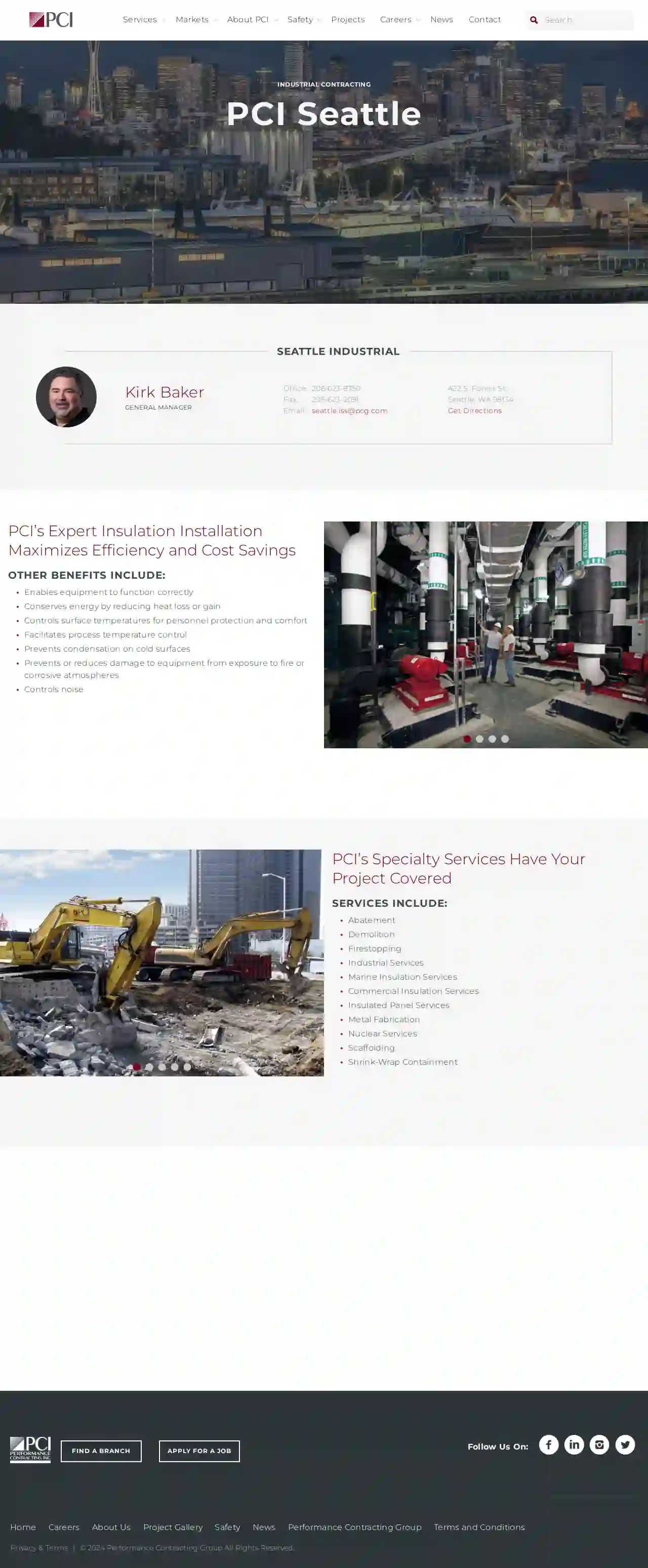
Performance Contracting Inc
4.97 reviews422 S. Forest St., Seattle, 98134, USAs a top-tier specialty contractor in the United States, Performance Contracting, Inc. takes pride in providing a comprehensive range of solutions and services to our valued clients. Our expertise and commitment to excellence ensure that we consistently meet and exceed customer expectations, setting the standard in the construction industry. With over 60 years of industry experience, PCI expertly delivers innovative solutions tailored to the specific needs of diverse market sectors. Our vast expertise and dedication to addressing unique challenges ensure that every project benefits from our proven track record. As an employee-owned company, we've been at the forefront of the commercial and industrial sectors, providing a vast range of services that have made us leaders in the industry. Our drive to be creative and trailblazing is what sets us apart.
- Services
- Why Us?
- Our Team
- Gallery
Get Quote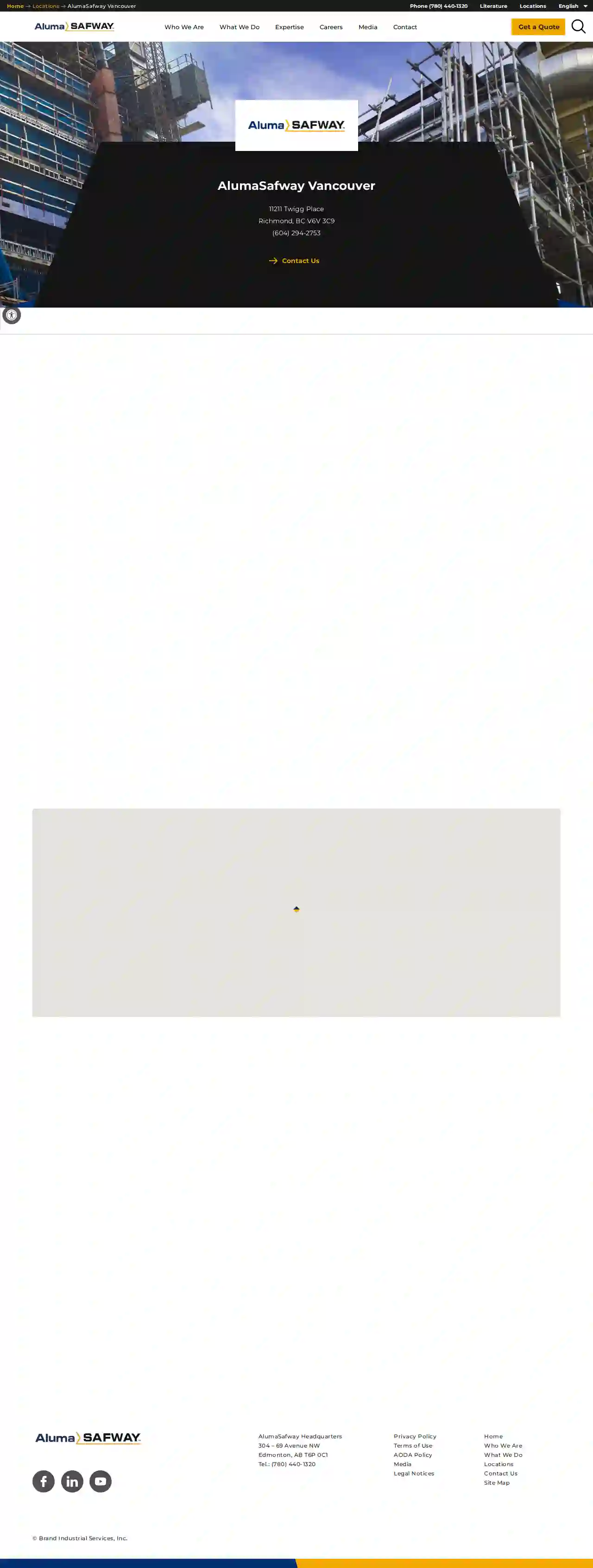
AlumaSafway Vancouver
3.311 reviewsRichmond, BC, 11211 Twigg Place, V6V 3C9, USAlumaSafway is a leading global provider of access, specialized services, and forming and shoring solutions to the industrial, commercial and infrastructure end markets in Canada. With the broadest range of solutions and the greatest depth of expertise, our Vancouver, British Columbia, location is ready to serve you. We provide scaffold for sale and rental, forming and shoring solutions, comprehensive commercial and industrial services, and best-in-class safety to the oil and gas, power generation, civil and infrastructure, and commercial construction industries throughout Canada.
- Services
- Why Us?
- Gallery
Get Quote
Berg Equipment & Scaffolding Co., Inc.
4.862 reviews2130 East D Street, Tacoma, WA, 98421, USLocally and family owned since 1969 Raising The Bar For Essential Access Equipment for Residential, Commercial and Industrial Projects Since 1969 Residential Building a new home or adding onto your current one? Find the best scaffolding solution with Berg! We can custom-design scaffolding for your home or simply rent or sell you the equipment you need. Industrial Whether you’re building a new warehouse, factory, manufacturing plant, or any other industrial project, call us for the best construction equipment solutions, whether you prefer to rent or buy. Commercial Expanding your business, opening a new one, or simply remodeling? If your job requires access to the work area, we can provide full-service installation that meets your requirements. Your Access Equipment Supplier for Washington State Since 1969 Since 1969, we have been the trusted choice for scaffolding in Seattle and Tacoma, WA. Reaching high places has never been easier with construction equipment from Berg Equipment & Scaffolding Co Inc. Choose from a wide range of options including scaffolding, aerial lifts, mast climbers, forklifts, shoring, event staging, bleachers, portable building systems, and much more. If you have a tricky construction project, we can design a custom scaffolding solution to meet your needs. We also provide installation and removal services for both homeowners and commercial contractors. Equipment Berg Equipment & Scaffolding Co Inc offers versatile services and equipment to residential, commercial, and industrial contractors. We have knowledgeable staff with decades of experience.
- Services
- Why Us?
- Testimonials
- Gallery
Get Quote
Matakana Scaffolding B.C. Inc.
3.421 reviews5288 Still Creek Ave, Burnaby, V5C 4E4, USMatakana Scaffolding Inc. is a trusted leader in the scaffolding sector, operating from their central office in Vancouver, British Columbia, Canada. Established in 2002, Matakana has built a strong reputation for creating innovative scaffold access, staging, and weather containment solutions. Their globally experienced team has the capabilities to address the diverse and complex challenges commonly encountered in the construction industry. Known for quality and reliability, Matakana handles a wide range of projects, across residential, commercial, and industrial job sites. They specialize in the delivery of innovative scaffolding solutions for complex construction access situations.
- Services
- Why Us?
- Gallery
Get Quote
Canada Scaffold Supply Co. Ltd.
4.722 reviews11331 Twigg Place, Richmond, V6V 3C9, USCanada Scaffold Supply is an industry leading scaffolding company located in Richmond, BC, in operation since 1974. Offering a range of services including scaffold, shoring, swing stage, structural steel, event rentals, temporary fencing, portables, and tank services. Our team is dedicated to providing exceptional service and quality products.
- Services
- Why Us?
- Accreditations
- Testimonials
- Gallery
Get Quote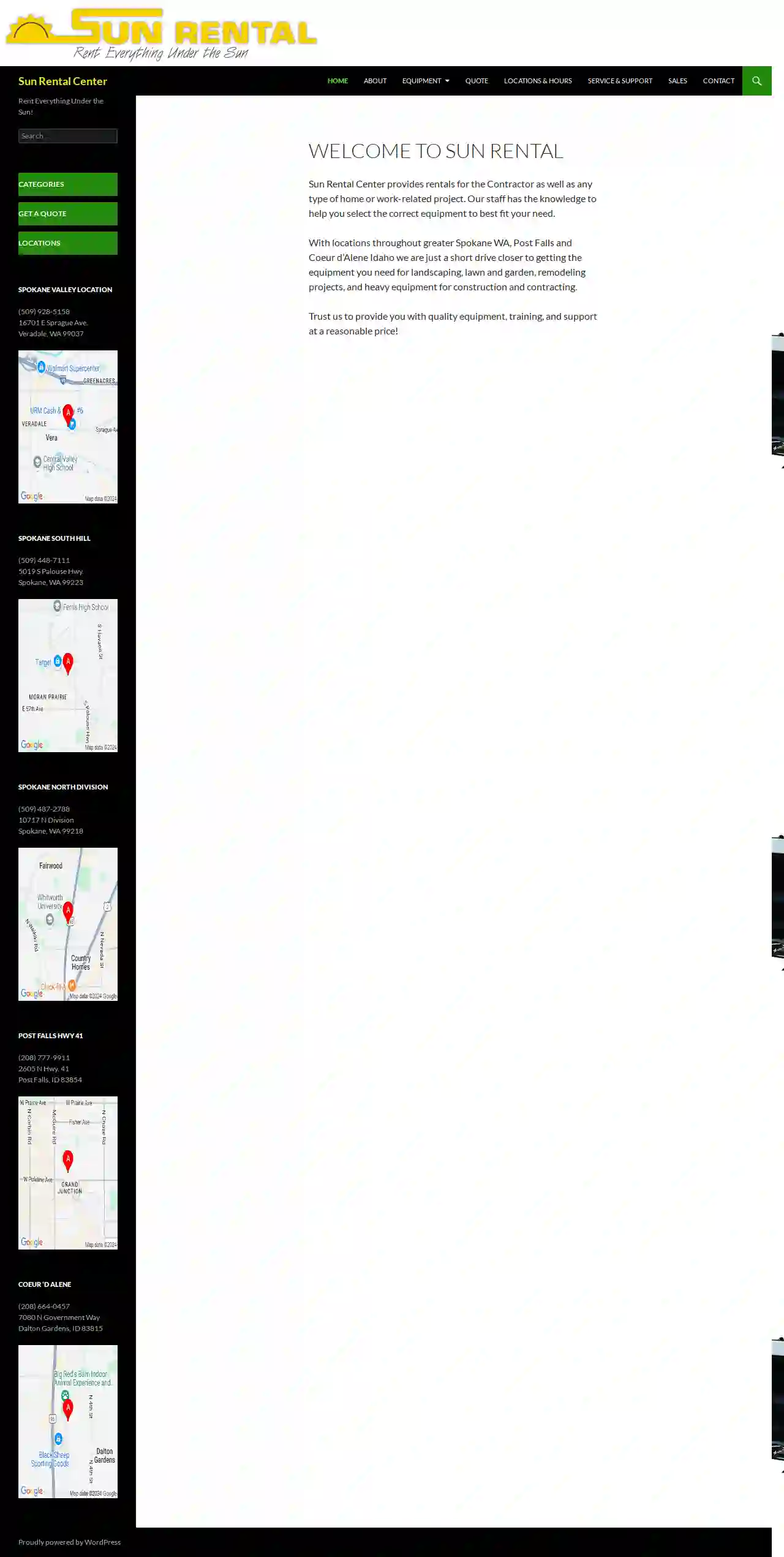
Sun Rental Center
4.218 reviews16701 E Sprague Ave., Veradale, 99037, USWelcome to Sun Rental Sun Rental Center provides rentals for the Contractor as well as any type of home or work-related project. Our staff has the knowledge to help you select the correct equipment to best fit your need. With locations throughout greater Spokane WA, Post Falls and Coeur d’Alene Idaho we are just a short drive closer to getting the equipment you need for landscaping, lawn and garden, remodeling projects, and heavy equipment for construction and contracting. Trust us to provide you with quality equipment, training, and support at a reasonable price!
- Services
- Why Us?
- Our Team
- Gallery
Get Quote
Over 2,353+ Scaffolding Companies on our directory
Our scaffolding contractors operate in Moses Lake and beyond!
ScaffoldingHQ has curated and vetted Top Scaffolding Contractors in and around Moses Lake. Find a top & trustworthy contractor today.
Frequently Asked Questions About Scaffolding Companies
- Licensing and Insurance: Verify their licenses are current and that they have adequate insurance coverage.
- Experience: Choose a company with a history of successfully completing similar projects. Ask for references and check their portfolio.
- Safety Record: Inquire about their safety practices and accident history. A strong safety culture is essential.
- Professionalism: Observe their communication, responsiveness, and attention to detail. A reputable company will be organized and transparent.
- Reviews and Testimonials: Read online reviews and feedback from previous clients to assess their reputation.
- Industry Affiliations: Membership in professional organizations like the NASC (National Access & Scaffolding Confederation) indicates a commitment to industry standards.
- Project Height and Access: The height of the structure and the accessibility of the working area are primary considerations.
- Load Capacity: The weight of workers, materials, and equipment that the scaffolding needs to support.
- Project Complexity and Shape: The shape and complexity of the structure may necessitate specialized scaffolding configurations.
- Ground Conditions: The type of ground (soft, uneven, sloping) will influence the scaffolding foundation and support requirements.
- Duration of Use: The length of time the scaffolding will be needed can impact the choice of system.
- Budget: Different scaffolding types have varying costs.
- Experience and Expertise: Look for companies with a proven track record in similar projects, whether it's residential, commercial, or industrial.
- Licensing and Insurance: Verify that the company has the necessary licenses and insurance coverage to operate legally and protect you from liability.
- Safety Record: Inquire about their safety practices and training programs for their employees. A strong safety culture is crucial in scaffolding.
- Reputation and Reviews: Check online reviews and testimonials from previous clients to gauge their reliability and quality of work.
- Professionalism: Choose a company that communicates clearly, provides detailed quotes, and demonstrates a commitment to customer satisfaction.
- Workers: Consider the number of workers on the scaffolding at any given time.
- Materials: Include the weight of building materials, tools, and equipment being used on the platform.
- Environmental Factors: Factor in potential loads from wind or snow, especially for taller scaffolding structures.
How do I know if a scaffolding company is reputable?
How do I choose the right type of scaffolding for my project?
How do I find a reputable scaffolding company?
What is the weight limit for scaffolding?
How do I know if a scaffolding company is reputable?
- Licensing and Insurance: Verify their licenses are current and that they have adequate insurance coverage.
- Experience: Choose a company with a history of successfully completing similar projects. Ask for references and check their portfolio.
- Safety Record: Inquire about their safety practices and accident history. A strong safety culture is essential.
- Professionalism: Observe their communication, responsiveness, and attention to detail. A reputable company will be organized and transparent.
- Reviews and Testimonials: Read online reviews and feedback from previous clients to assess their reputation.
- Industry Affiliations: Membership in professional organizations like the NASC (National Access & Scaffolding Confederation) indicates a commitment to industry standards.
How do I choose the right type of scaffolding for my project?
- Project Height and Access: The height of the structure and the accessibility of the working area are primary considerations.
- Load Capacity: The weight of workers, materials, and equipment that the scaffolding needs to support.
- Project Complexity and Shape: The shape and complexity of the structure may necessitate specialized scaffolding configurations.
- Ground Conditions: The type of ground (soft, uneven, sloping) will influence the scaffolding foundation and support requirements.
- Duration of Use: The length of time the scaffolding will be needed can impact the choice of system.
- Budget: Different scaffolding types have varying costs.
How do I find a reputable scaffolding company?
- Experience and Expertise: Look for companies with a proven track record in similar projects, whether it's residential, commercial, or industrial.
- Licensing and Insurance: Verify that the company has the necessary licenses and insurance coverage to operate legally and protect you from liability.
- Safety Record: Inquire about their safety practices and training programs for their employees. A strong safety culture is crucial in scaffolding.
- Reputation and Reviews: Check online reviews and testimonials from previous clients to gauge their reliability and quality of work.
- Professionalism: Choose a company that communicates clearly, provides detailed quotes, and demonstrates a commitment to customer satisfaction.
What is the weight limit for scaffolding?
- Workers: Consider the number of workers on the scaffolding at any given time.
- Materials: Include the weight of building materials, tools, and equipment being used on the platform.
- Environmental Factors: Factor in potential loads from wind or snow, especially for taller scaffolding structures.